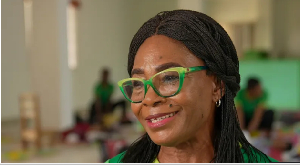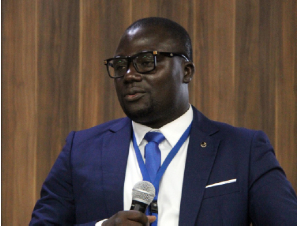We all know that, the missionary schools in Ghana have contributed significantly in the area of education in this country. This position was affirmed by the Supreme Court of Ghana in James Kwabena Bomfeh v Attorney which was a matter concerning the construction of the National Cathedral.
In fact, their enormous contribution towards our educational development predates the fourth Republic. If you look at the numerous Secondry Schools in Ghana, most of them were previously managed by the church. Government of Ghana at some point in time had no absolute control in the management of these institutions because, they were built by the missionaries.
Those schools were built by them for a specific purpose. The purpose of their coming to Ghana was to electrify every corner of this country with their philosophy and doctrines.
What has been elucidated above however can not be a subtle justification for religious intolerance in those schools which is now gaining public notoriety in Ghana today. The fact that, these schools were built by missionaries does not mean that, people from different religious background must not be allowed to manifest the practice of their religion which is constitutionally guaranteed and fortified.
Earliest history of formal, western-style education in Ghana is directly associated with the history of European activities on the Gold Coast. The Portuguese were the first Europeans to arrive at the Guinea coast in 1471. Their intention to establish schools was expressed in imperial instructions that, in 1529, encouraged the Governor of the Portuguese Castle at Elmina to teach reading, writing, and the Catholic religion to the people.
While there is no evidence to demonstrate their success, it is amply proven that Dutch, Danish, and English companies operated schools on the Gold Coast, and that instruction in reading, writing, and religious education took place within the castle walls.
The best known Castle Schools on the Gold Coast included the one operated by the Dutch at the former Portuguese fortress at Elmina, the British school at Cape Coast Castle, and the Danish school at Christiansborg, near Accra. In the late eighteenth century and throughout the nineteenth century, children of wealthy African merchants on the coast and relatives of some of the important local chiefs were instructed at castle schools.
The historian C. K. Graham has however observed that the majority of students were mulatto children of the European castle staff and their African women.
While pupils received religious instruction as part of their basic training, the primary purpose for educating young people was to prepare them for employment in the European commercial enterprises on the coast. It was, therefore, not unusual that the schools received some funding from the company secretariats overseas.
For example, in his history of the Royal African Company, K. G. Davies presented evidence of company sponsorship of education in 1694 and again in 1794 through 1795.
But such funding was irregular and, therefore, contributions from other sources were critical to the survival of the school system. Monthly contributions from the salaries of the European men at the Cape Coast Castle created the "Mulatto Fund," from which some financial support for children was drawn.
Also, some of the chaplains who served as teachers of the castle schools experimented with imposing fines on the European staff that missed Sunday religious services without a good excuse for doing so. The Rev. Thomas Thompson, who ministered at Cape Coast from 1752 through 1756, was reported to have depended on such revenue to support his school.
Though irregular, overseas beneficiaries also sponsored the education of some African children who traveled to European centers of learning to be schooled. In a 1788 letter to the Privy Council in London, Mayor John Tarleton of Liverpool talked about the 50 or so "odd West African children, chiefly from the Gold Coast and Sierra Leone, whom parents and British traders had sent over to Liverpool to be educated."
As much as this was impressive, overseas training for African students was limited to the very few. On the other hand, the castle schools provided only basic education. Company support was limited, and often times the chaplain-turned-teacher had to resort to innovative means of fund-raising to support themselves and the schools.
In comparison to the years before, the nineteenth century witnessed a redoubled effort to improve education on the Gold Coast. The Company of Merchants that took over the activities of the Royal African Company in 1752 appointed Colonel George Torrane in 1805 as its new president of the Cape Coast Castle.
While it is not clear if Torrane made any recommendation for the improvement of castle education on the Gold Coast, there is information that the Company of Merchants voted money to hire one Charles Williams as master of the Cape Coast School.
Mr. Williams arrived on the Gold Coast in 1815 and reopened the company school at Cape Coast the following year. Schools were also opened at Anomabo, Accra, and Dixcove, and a total of 70 students were attending classes at the facilities by 1822.
The 1820s was a period of conflict between the British and the dominant Asante (Ashanti) kingdom to the hinterland. Between 1815 and 1820, all the major European establishments sent emissaries to the Asante capital of Kumase to negotiate increased commercial relations.
However, disagreements between Asante officials and the British led to the war of 1823-1824, in which the newly appointed Governor of the Cape Coast, Castle Sir Charles MacCarthy was killed. Later in 1826, the joint forces of the British, the Danes, and their local allies fought the Asante army in the plains of Accra.
While trade into the interior certainly suffered from the conflict, historians are not specific on the extent to which the political instability affected the state of education at the castles. In the 1831 treaty that renegotiated relations among the warring parties, however, two Asante royal youth—Owusu Ansa and Owusu Nkantabisa—were sent to Cape Coast as a sign of the kingdom's commitment to peace.
The boys were schooled at the castle school and were later sent to England for a Christian education. It is not surprising that the Dutch, who had competed against the British from their post at Elmina, also sent Akwasi Boakye and Kwamina Poku (also from the Asante royal house) to the Netherlands in the mid-1830s to be educated. In fact, by 1841 some 110 students were reported to be attending English schools on the Gold Coast.
The effort to provide Christian education on the Gold Coast took a decisive turn with the arrival of Wesleyan and Basel missionaries in 1835. The first Wesleyan (Methodist) school was at the Cape Coast Castle. The Rev Thomas B. Freeman reported that nine Wesleyan mission schools had been opened by 1841—six for boys and three for girls.
Despite the achievements on the coast, efforts to open schools in the Asante interior did not succeed. Even though Rev. Freeman returned the two royal youth to Kumase in 1841, the Europeans were prevented from opening schools in the territory. Apparently, some of the senior Kumase chiefs expressed fear that western-style education would negatively impact local values.
Wesleyan efforts to conduct schools continued to be limited to the coast throughout the nineteenth century.
Unlike the Wesleyan, the Basel (Presbyterian) mission headed for the higher and healthier elevations of the Akuampim Ridge while keeping its headquarters at Christiansborg near Accra. By the 1850s, the Basel missionaries had boarding schools at Christiansborg and schools on the Akuapem Ridge, including one for girls at Aburi.
At their school at Akropong (also on the ridge), the Basel missionaries trained teachers, used the schools as agency for the spread of Christianity, and published an elementary grammar book and dictionary in the local Akan language. To be sure, the popular linkage of western-style education to Christian conversion developed from these experiences.
Government attempts to increase educational activities on the Gold Coast began with the signing of the Bond of 1844. This was a political, military agreement between the British and a number of coastal Fanti chiefs. In the agreement, the British were allowed to intervene in criminal cases, provide military protection for the region, and, above all, to collaborate with the chiefs to "mould the customs" of the coastal peoples along lines of the "general principles of English law."
It was in accordance with the spirit of the bond that Governor Hill proposed his 1852 Ordinance. This recommended that a poll tax be imposed to finance the general improvement of the territories—including the provision of education that could lead to the establishment of a bettereducated class of African.
Following the consolidation of the coastal region as the British Gold Coast Colony, the administration became more aggressive in pursuit of its educational policy. This was precipitated by the British purchase of the Danish property at Christiansborg in 1850 and the Dutch Elmina Castle in 1872.
To help redress problems faced by the mission schools—such as training local teachers and improving the quality of education—the administration made grants to both the Wesleyan and Basel missions in 1874.
In the Educational Ordinance of 1882, government grants to denominational schools were made dependent on an assessment of the level of efficiency. The schools receiving grant-in-aid were defined as "government assisted schools," but their primary funding was to come from the missions themselves and from other private sources.
There were also proposals for publicly funded government schools. Industrial schools were identified as important for the Gold Coast, and a Board of Education was recommended to monitor the school system. Rev. Sutter of the respected Fourah Bay College in Sierra Leone was appointed to the position of Inspector of Schools in the Gold Coast Colony.
The administration's desire in the 1880s to provide funds in support of education was interesting, since at the same time it rejected calls to contribute to the construction of rail lines to the gold mines that made the Gold Coast Colony a worthy territory.
The support for education must have received an indirect boost from the General Act of the Berlin Conference on Africa, in which education was described as an important European civilizing mission to Africa.
The government's renewed interest in education in the colony should therefore be evaluated in relation to the perceived benefits to be derived from the colony in the future. Thus, in an Education Ordinance of 1887, the government called for improvements in the school curriculum, teacher certification, and practical education for pupils.
It also set the standards by which private schools might qualify for assistance. In F. Wright's 1905 essay on the "System of Education in the Gold Coast," a total of 132 mission schools were said to be in existence by 1901.
Let the records reflect that, since Dr.Kwame Nkrumah took over the affairs of this country, most of the churches lost an absolute control in the management of their own schools. The government realized the need in bringing all these missionary schools under one common umbrella to harness the country's educational development.
It must be understood that, before government took charge of schools built by the church, those doctrines were the only ones that could be manifested by practice and that actually had endorsement of the management of the missionary schools. This was the reason why, a non Catholic could not be allowed in schools like ST.Augustines, Johns, ,Peters, and the likes. Same was also applicable to schools named after John Wesley.
They were allowed to prevent others because they funded their own schools. Later government became convinced that, certain things ought to be done to enable every single to benefit from the existence of these schools on their soil irrespective of creed, religion or status. Government began negotiations with them to take over these schools.
They allowed government to take over the management of the schools with a condition that, same would be funded by government. Government on the other hand agreed to the said condition and committed a lot of resources so it could be run effectively.
Today, it is the same reason why, most of these schools have their missionary names but are owned,managed and funded by government to give quality education to the Ghanaian child. It is sad to note that, in recent times, Headmasters and Headmistresses of these schools have decided to go back to the historical existence of these schools when same cannot be applied today by virtue of how these schools have been re-structured by government to accept all forms of religious doctrines provided they are not in conflict with the laws of Ghana.
The decision by the Headmistress of Wesley girls to treat our muslim sisters on campus as second class citizens because they find themselves in a missionary school ought to have been condemned the very day, these students were not allowed to enter the school premises with the holy Qu'ran. Today our sisters are being told not to fast in this holy month of Ramadan which is one of the sacred pillars of Islam.
As a country, we must not lose sight of the fact that, our peaceful co-existence has always been tied around religious tolerance and for that matter, anything that seek to untie this bond must not be countenanced at ll even for a seconds.
Opinions of Sunday, 2 May 2021
Columnist: Dawda Eric



















